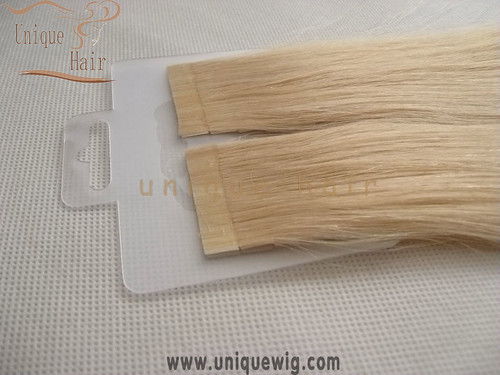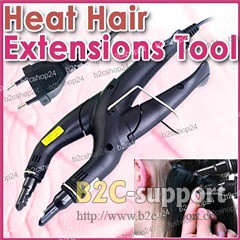 Tape Hair Extensions
Tape Hair ExtensionsAuthor:Tape Hair Extensions
 Heat Fushion Connector Tool Human Hair Extensions Iron
Heat Fushion Connector Tool Human Hair Extensions IronThis product has the features of heat tolerant and fast heating, bonds the wig and hair effectively
Hair extension is no harms to hair, safe and reliable, user can extends various hair styles
Suitable for using at home or professional hairdressing salon
Author:sylivalyn
The first two types are attached individually to thin sections of your own natural hair. Various bonding processes are then used to secure it to your hair so that it moves and looks as natural as possible. Attachment of these hair extensions is done by weaving, heat-capsulation, gluing, and coating of polymer waxes.
One of the bond-based extension methods is done with specialized machines that soften the keratin in hair. Keratin is the protein found in our nails and hair. Using a new ultrasound technology plus heat, both natural human hair and synthetic hair extensions are fused together without leaving visible adhesive marks. Some salons also attach extensions using small iron tipped instruments in order to seal wax-based polymers onto your own hair. The downside to this process is the damage that it poses to hair follicles due to the head and chemicals that go with the application.
Another individual strand bond-based extension used by high-end salons is the use of Remy hair which are attached using a special type of Nylon that shrinks after application, leaving a seamless look. Hair extension reviews have said that it lasts for about 3 months or more. Micro-bonds that connect your natural hair and the Remy hair together allows for greater freedom in styling.
Braiding or weaving are the most used and well-known method of attaching non-bond based extensions. Again, small strands of hair are braided together with the hair extensions. This is done as close to the base of the hair as possible in order for growing hair to better blend-in with the foreign set of follicles.
One of the newest innovations in non-bond based extensions is the use of micro threads which can hardly be seen by the naked eye. There are, however, mixed reviews with this process because some clients have claimed that there was great stress on the scalp during and after application. Perhaps it all depends on the salon you go to but if you do decide on this method, make sure you go to a reputable hair stylist to do it. On the other hand, positive reviews have also been written for this threading process, claiming that there was hardly any stress plus the life span on the extensions reach up to seven months.
Weft hair extensions, on the other hand, is not a strand-by-strand type of application. Wefts are manufactured using both natural and hair extensions. Tracks of extensions are either “glued-in” or weaved into the base of the hair.
A quick weft hair extensions application was developed by Cynthia Orr called Flattracks. Custom-made wefts are sewn into the base of the hair which only takes an hour or two to finish. This method of application will last you around 3 to 6 months of hair extensions. Of course, bonds can also be used to attach weft hair extensions. Special adhesives and glues are used which means this is a less expensive and less enduring option for extensions.
Wow! Nice Blog.I feel very glad to see this Post.Here is a website for The Seamless Collection hair extensions.
ReplyDelete